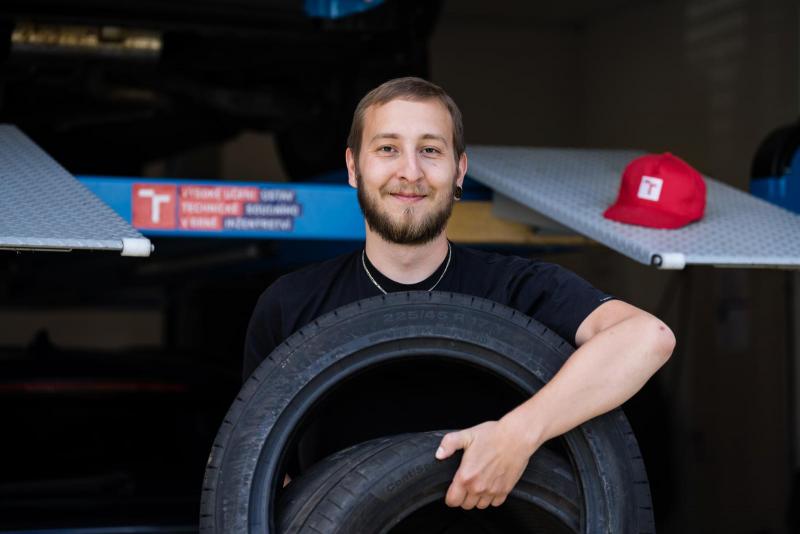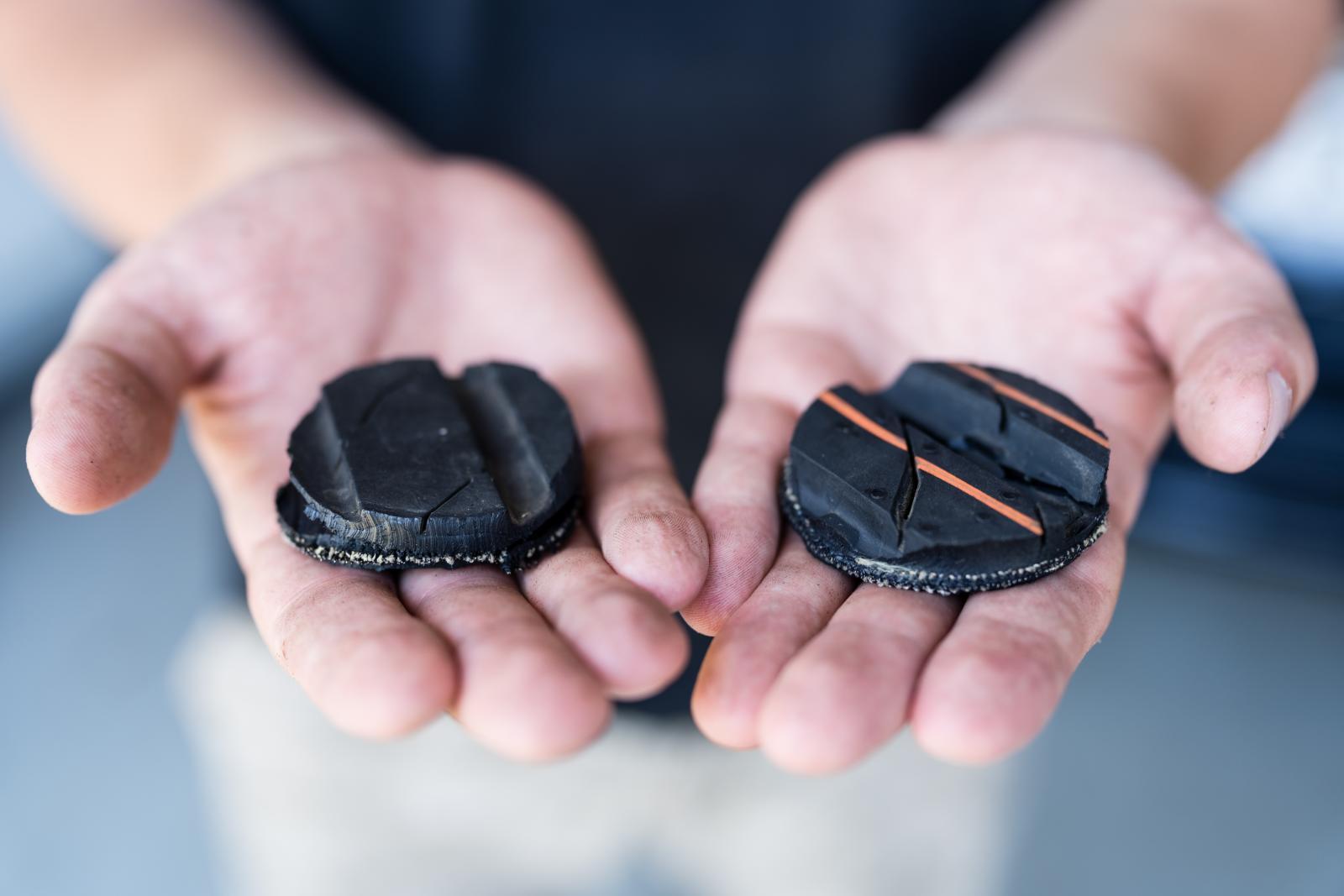Ideas and discoveries
How does the age of tyres affect road safety? The answer will be offered by research from the IFE

There are three factors that degrade the driving characteristics of tyres – exposure to chemicals such as acids and salts, wear and tear from driving and the ageing of the material. It is the latter variable that is now in the sights of experts at the Institute of Forensic Engineering (IFE), where a pilot study has just been launched to investigate how the mechanical properties of tyres change with age.
“In a real situation, all three factors are operating simultaneously. But to be able to assess their impact well, we need to examine them separately. So now we are focusing on the aging, or steering, of the material. It occurs through oxidation, during which oxygen disrupts the polymer chain of the rubber, which is the main component of the tyre,” explains doctoral student David Jelínek from the Institute of Forensic Engineering.
Researchers will now develop and test an optimal method on tyre samples to speed up the ageing process so that the result matches the actual age of the tyres. The research is designed to show how the chemical composition and structure of a tyre changes with age. The result should be a reliable methodology that can assess the condition of tyres used in the Czech Republic. A follow-up four-year project would then focus on testing the driving performance of scuffed tyres.

“Accident statistics show that around 7% of cars had tyres older than 10 years. This is beyond the limit – manufacturers recommend that they should not be in service for more than 5 years. At the same time, they state that with proper storage there is no significant loss of properties and even 5 year old tyres can be sold as new. And so many drivers exceed the critical 10-year limit,” says the doctoral student, who recommends checking the production code before buying.
At the same time, he appeals to drivers – tyres older than 10 years can significantly impair the car's handling “The tread depth is really not the only important factor that tells you how safe a tyre is. As the years go by, the tyre hardens, which then transfers forces poorly and its adhesion properties deteriorate,” he adds.
Further research by experts from IFE, which started in February this year, should also ensure greater road safety. It concerns the visibility of portable traffic signs, such as warning triangles or directional boards. These signs differ from the standard types by their position and placement on the road.
“We have found that headlight types can affect the night-time visibility of these signs. The latest LED headlights were preceded by xenon and halogen headlights. Paradoxically, it is the oldest type, halogen headlights, that allows better visibility of some signs. From a design point of view, they produce light in greater dispersion. Modern headlights produce a sharp boundary between the illuminated and unlit areas so that their intensity does not dazzle oncoming drivers. This eliminates light scattering, which can lead to lower illumination of traffic signs located above a certain level,” Jelínek says.
Experts will now refine and test the findings so far in the field by observing drivers while driving. “We can't reveal too much yet, so as not to influence potential research participants. However, we should have the results of this research by the end of this year,” concludes the doctoral student.
(mar)
A hundred-year-old water system and a missing sewer system. Nevertheless, Kamenka is one of the most expensive districts in Brno
Historical legacy affects the value of cultural monuments. For example, the distance from the stop has an influence
Unique Damage Catalogue maps dozens of traffic accidents. It will help forensic experts and insurance companies.
Women from BUT who move the world of science and technology
Where does a motorcyclist look while riding? The answer will be offered by research from IFE